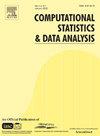Variable selection using data splitting and projection for principal fitted component models in high dimension
Abstract
Sufficient dimension reduction (SDR) is such an effective way to detect nonlinear relationship between response variable and covariates by reducing the dimensionality of covariates without information loss. The principal fitted component (PFC) model is a way to implement SDR using some class of basis functions, however the PFC model is not efficient when there are many irrelevant or noisy covariates. There have been a few studies on the selection of variables in the PFC model via penalized regression or sequential likelihood ratio test. A novel variable selection technique in the PFC model has been proposed by incorporating a recent development in multiple testing such as mirror statistics and random data splitting. It is highlighted how we construct a mirror statistic in the PFC model using the idea of projection of coefficients to the other space generated from data splitting. The proposed method is superior to some existing methods in terms of false discovery rate (FDR) control and applicability to high-dimensional cases. In particular, the proposed method outperforms other methods as the number of covariates tends to be getting larger, which would be appealing in high dimensional data analysis. Simulation studies and analyses of real data sets have been conducted to show the finite sample performance and the gain that it yields compared to existing methods.

 求助内容:
求助内容: 应助结果提醒方式:
应助结果提醒方式:


